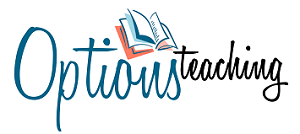
Enterprises need a variety of digital learning content to train, reskill, and train employees. They further need to ensure that employees can choose from several content formats. Most organizations lack the in-house skills required to produce multi-format content for essential learning and development (L&D) programs like technical, soft skills, technology, compliance, leadership, and onboarding.
The digital library helps companies and startups run multiple L&D programs successfully without creating and optimizing content internally. Leading digital libraries enable employees to access a repository of digital content without managing licenses and copyrights. Additionally, new-age digital library platforms help employees understand a topic deeply by sharing curated content.
Hence, digital libraries have become an essential and widely used eLearning tool. Enterprises across sectors leverage digital library software while implementing eLearning. They further boost content delivery by integrating the virtual library with online classroom software or a learning management system. We can understand this eLearning tool’s significance by discussing the prominent benefits of a digital library.
11 Important Benefits of a Digital Library
- Anytime and Anywhere Accessibility
Unlike conventional libraries, a digital library does not impose time restrictions. A learner can access the web-based software anytime and anywhere using a desktop, laptop, smartphone, or tablet. Hence, an employee can access eLearning content at his own pace. The 24/7 availability and accessibility make it easier for employees to acquire knowledge and skills after completing their professional responsibilities.
- Multiple Content Formats
A digital library is developed with a diverse repository of multi-format content. It enables employees to understand a topic or concept by accessing different types of eLearning content – eBooks, videos, audio, simulations, journals, and quizzes. The content diversity creates opportunities for employees to acquire knowledge by reading eBooks, watching educational videos, listening to podcasts, or taking quizzes.
- Off-the-Shelf Training Content
Off-the-shelf content refers to the predesigned digital training content created independently for specific L&D programs. Each organization can accumulate the required off-the-shelf content only by managing multiple licenses and copyrights. The digital library software enables them to collect the required eLearning content without violating copyrights and licensing rules. An organization can customize and scale the software according to its current and emerging content needs.
- Curated Content
New-age digital library software helps employees understand a topic deeply by sharing curated content. They use artificial intelligence (AI) and machine learning (ML) to find thought leadership content related to specific topics from external sources. Intelligence technologies make the software effective in gathering relevant and insightful content from credible and reputable sources. The curated content boosts knowledge application by making employees understand industry trends and best practices.
- Intuitive Search Interface
Leading digital library solutions are developed with robust search functionalities. They accelerate content delivery by featuring intuitive search interfaces. Employees can use the search interface to find relevant content based on specific topics or keywords. Also, the digital library will share relevant curated content with the employees according to their needs and interests. Hence, employees can retain and apply knowledge by understanding a topic deeply.
- Content Mapping
While creating training programs, instructors or trainers ensure that each employee can access the relevant eLearning content. Hence, they map specific eLearning content to individual training programs. Digital library software simplifies the task by providing content mapping options. Instructors can use built-in tools to create L&D programs by combining and aligning eLearning content.
- Real-Time Updates
In the age of Industry 4.0, industry and technology trends at regular intervals. An employee can keep his skills relevant only by gathering the latest information and news. Digital library software conveys content updates by sending automated notifications. The notifications make it easier for employees to access updated content without putting in extra time and effort.
- Learner Engagement
As highlighted by several studies, online course completion is extremely low. No enterprise can increase the online course completion rate without keeping employees engaged and motivated. New-age digital library software fosters learner engagement using gamification techniques. Badges, coins, and other gamification features provided by the software keep learners engaged and motivate them to acquire knowledge and skills.
- Built-in Tracking Tools
New-age digital library platforms feature built-in tracking tools. These tracking tools help administrators monitor and measure the performance of learners, training programs, and content. The real-time information provided by the software helps managers make informed decisions. They can boost the L&D process by measuring the content gap and understanding content needs.
- Integration Capabilities
An enterprise cannot run multiple L&D projects successfully without implementing and integrating a slew of eLearning tools. For instance, it needs a learning management system (LMS) to create, deliver, manage, and monitor training programs effectively. The cloud-based digital library tools come with application programming interfaces (APIs). APIs make it easier for administrators to build a unified learning platform by integrating the digital library with existing eLearning tools and solutions.
- Cost Reduction
A digital library helps companies curtail L&D costs in several ways. Firstly, an organization can set up a digital library without incurring infrastructural costs. Secondly, it can manage the digital library efficiently without deploying skilled staff. Thirdly, the digital library enables organizations to save money by eliminating the need to create multi-format eLearning content. An organization can further avail of cloud-based digital library solutions based on the pay-as-you-use pricing model.
Conclusion
While discussing the benefits of a digital library, we must remember that the edtech tools vary from each other in many aspects. For instance, some digital libraries are developed as a repository of off-the-shelf eLearning content, while others share curated content as well as provide licensed content. Likewise, cloud-based digital library solutions are easier to implement, customize, and scale than conventional digital library tools.
An organization can integrate a cloud-based digital library effortlessly with eLearning tools using application programming interfaces (APIs). The integration makes it easier for organizations to build a unified learning platform by combining the digital library with essential eLearning tools. Hence, an enterprise can leverage the benefits of a digital library by comparing eLearning tools using multiple parameters.
